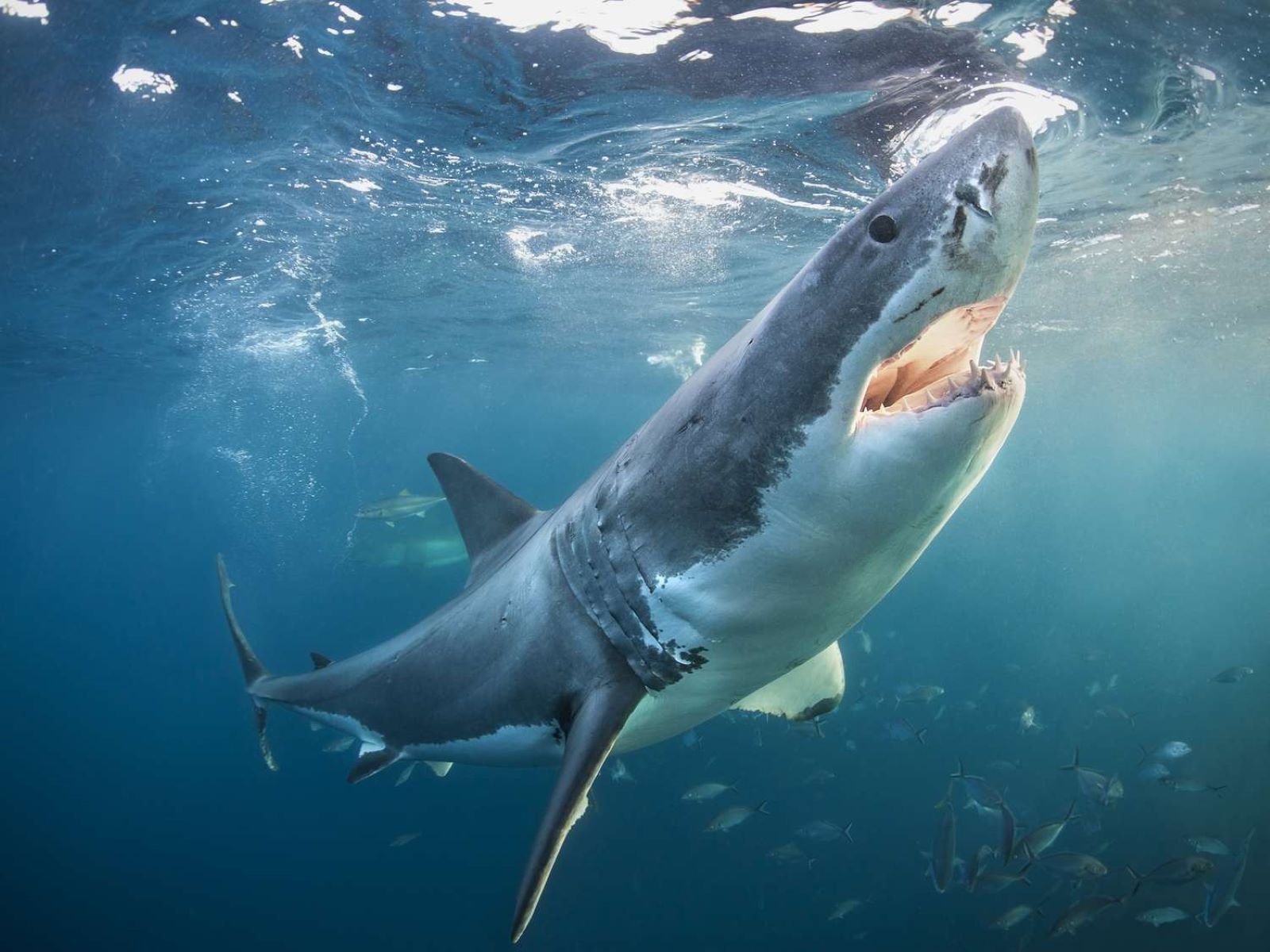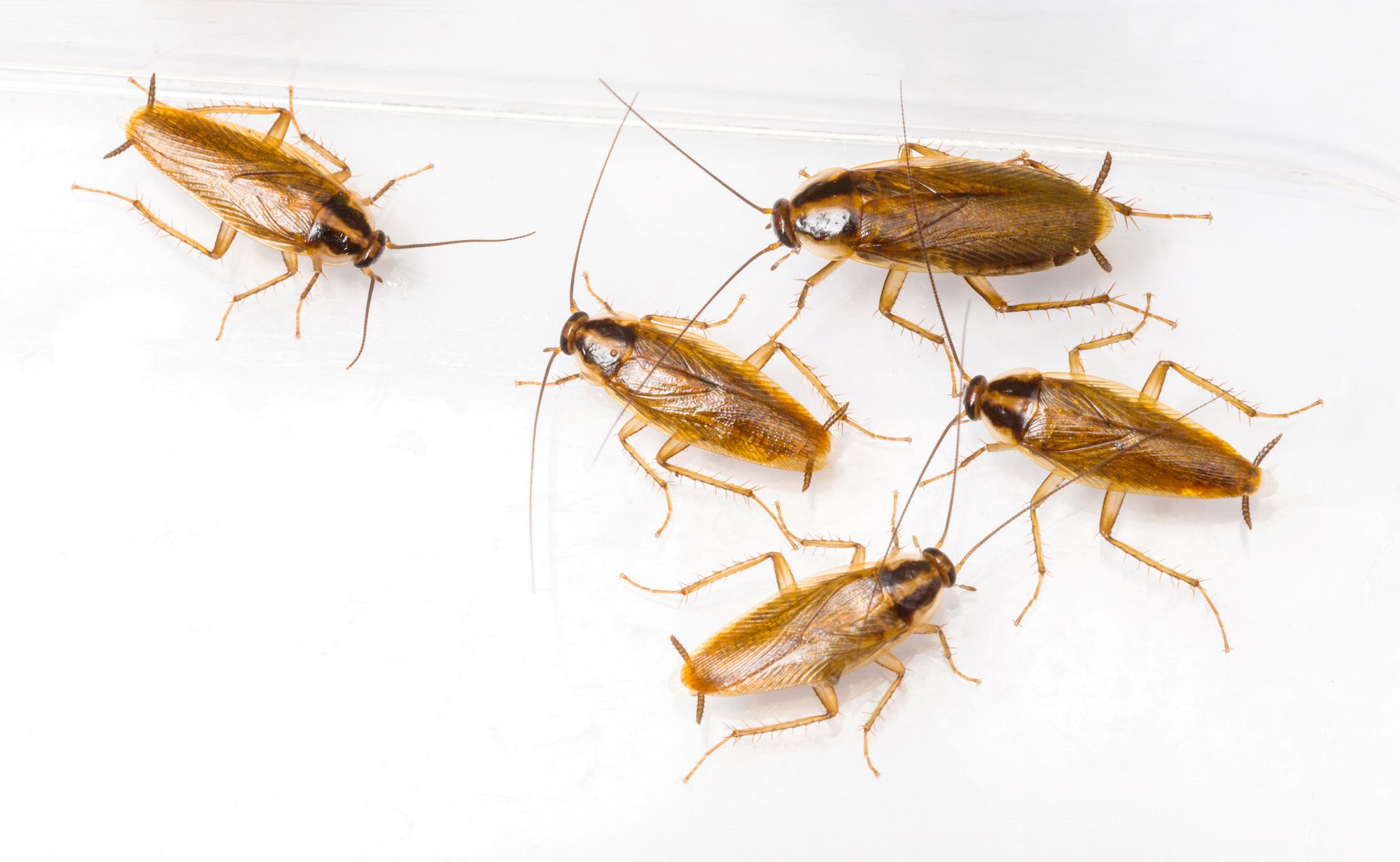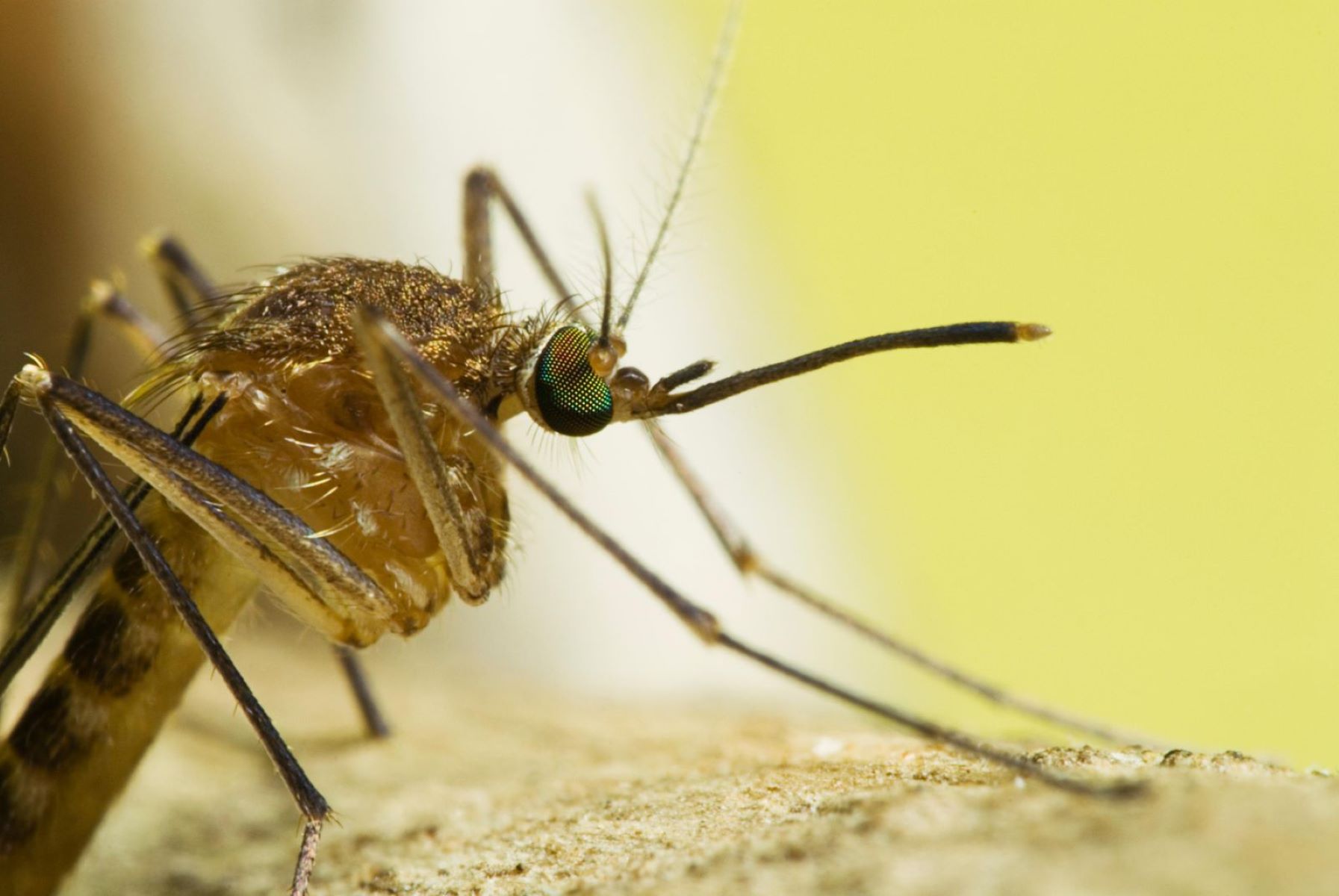

Science
10 Surprising Natural Predators Of Sharks
Published: January 27, 2024
Discover 10 surprising natural predators of sharks in the world of science. Learn about the fascinating predators that challenge these apex predators.
(Many of the links in this article redirect to a specific reviewed product. Your purchase of these products through affiliate links helps to generate commission for Regretless.com, at no extra cost. Learn more)
Table of Contents
Introduction
Sharks, with their sleek, powerful bodies and razor-sharp teeth, have long been revered as the apex predators of the ocean. Their formidable presence and role in marine ecosystems have captured the imagination of people around the world. However, despite their fearsome reputation, sharks are not invincible. In fact, they have their own set of natural predators that play a crucial role in maintaining the delicate balance of the underwater food web.
In this article, we will delve into the fascinating world of natural predators of sharks, shedding light on some unexpected creatures that pose a threat to these iconic marine predators. From the depths of the ocean to the coastal waters, these predators lurk, each equipped with unique adaptations and strategies for hunting and preying on sharks. By exploring these natural adversaries, we gain a deeper understanding of the complex dynamics that shape the lives of sharks and the diverse array of creatures that share their aquatic realm.
Join us as we embark on a journey to uncover the 10 surprising natural predators of sharks, unveiling the remarkable diversity of life beneath the waves and the intricate relationships that define the ocean's intricate web of life. Let's set sail into the realm of natural predation, where each encounter between predator and prey paints a vivid portrait of survival, adaptation, and the unending drama of the natural world.
As we venture into the depths of the ocean, we will encounter some of the most remarkable and unexpected predators that challenge the dominance of sharks in their own domain. From the stealthy maneuvers of killer whales to the cunning tactics of octopuses, each predator brings its own unique set of skills and attributes to the age-old battle for survival in the marine environment. Together, we will unravel the mysteries of natural predation and gain a newfound appreciation for the intricate tapestry of life that unfolds beneath the shimmering surface of the sea.
Join us as we dive into the realm of natural predation, where the hunter becomes the hunted, and the balance of power shifts with the ebb and flow of the tides. Are you ready to discover the unexpected predators that lurk in the shadowy depths, poised to challenge the reign of the mighty shark? Let's embark on this thrilling journey and uncover the astonishing world of natural predators of sharks.
Killer Whales
Killer whales, also known as orcas, reign supreme as one of the ocean's most formidable predators, renowned for their intelligence, speed, and remarkable hunting prowess. These majestic marine mammals, despite their name, are not whales at all but are the largest members of the dolphin family. With their distinctive black and white coloring and sleek, powerful bodies, killer whales are apex predators that command respect and awe in the marine realm.
In the intricate dance of predator and prey, killer whales have earned a fearsome reputation as efficient hunters capable of taking down a wide range of marine creatures, including sharks. Their sophisticated hunting strategies and cooperative behavior make them a formidable threat to sharks, particularly in regions where their habitats overlap.
One of the most remarkable aspects of killer whale predation is their ability to target and consume large sharks with remarkable precision and skill. Utilizing their keen intellect and advanced social structure, killer whales orchestrate coordinated attacks on sharks, leveraging their strength in numbers and strategic teamwork to overpower their formidable adversaries.
In addition to their strategic prowess, killer whales possess a diverse diet that includes a variety of marine species, ranging from fish and squid to seals, sea lions, and even other cetaceans. Their adaptability and versatility as hunters enable them to exploit a wide range of prey, including sharks, in their quest for sustenance.
The predatory interactions between killer whales and sharks are a captivating testament to the complex dynamics of the marine ecosystem. While sharks are formidable predators in their own right, they are not immune to the calculated tactics and relentless pursuit of killer whales. These interactions underscore the intricate balance of power and the ever-shifting dynamics of natural predation in the ocean.
As we delve into the realm of killer whale predation, we gain a profound appreciation for the remarkable intelligence and adaptability of these iconic marine predators. Their ability to outmaneuver and outwit sharks serves as a testament to the intricate tapestry of life beneath the waves, where each species plays a vital role in shaping the complex web of interactions that define the marine environment.
In the perpetual struggle for survival, killer whales stand as formidable adversaries to sharks, showcasing the relentless drive and ingenuity that define the world of natural predation. Through their remarkable hunting abilities and cooperative behavior, killer whales continue to reign as one of the most surprising and formidable natural predators of sharks, embodying the awe-inspiring power and complexity of the ocean's diverse ecosystem.
Crocodiles
Crocodiles, the ancient and formidable predators that inhabit both freshwater and saltwater habitats, are renowned for their stealth, power, and adaptability. These apex predators have earned a fearsome reputation as masters of ambush, utilizing their keen senses and powerful jaws to capture a wide range of prey, including unsuspecting sharks. Found in tropical regions around the world, crocodiles are stealthy hunters that lurk beneath the surface, patiently awaiting the perfect opportunity to strike.
In the intricate dance of predator and prey, crocodiles have been documented preying on sharks in coastal and estuarine environments, showcasing their remarkable predatory prowess. Their ability to launch surprise attacks from the water's edge or shallow depths makes them formidable adversaries to sharks that venture into their domain. With lightning-fast reflexes and powerful jaws capable of delivering bone-crushing bites, crocodiles pose a significant threat to sharks that may fall victim to their stealthy ambushes.
One of the most remarkable aspects of crocodile predation on sharks is their ability to adapt to a diverse range of habitats, from mangrove swamps to river deltas and coastal lagoons. This adaptability allows them to intersect with shark territories, creating opportunities for predatory encounters. The stealth and patience exhibited by crocodiles as they lie in wait for potential prey, including sharks, exemplify their mastery of ambush tactics and their ability to capitalize on the vulnerabilities of other predators.
The predatory interactions between crocodiles and sharks underscore the complex and dynamic nature of natural predation in the aquatic realm. While sharks are renowned for their speed and agility, they are not immune to the calculated tactics and stealthy strikes of crocodiles, highlighting the ever-present challenges that shape the lives of marine predators.
As we delve into the realm of crocodile predation, we gain a profound appreciation for the ancient lineage and formidable hunting abilities of these iconic reptilian predators. Their ability to navigate diverse ecosystems and prey upon a wide range of species, including sharks, serves as a testament to their adaptability and prowess as apex predators in the aquatic environment.
In the perpetual struggle for survival, crocodiles stand as formidable adversaries to sharks, embodying the stealth, power, and adaptability that define the world of natural predation. Through their remarkable hunting abilities and patient ambush tactics, crocodiles continue to reign as one of the most surprising and formidable natural predators of sharks, showcasing the unending drama and complexity of the underwater world.
Seals and Sea Lions
Seals and sea lions, collectively known as pinnipeds, are charismatic and agile marine mammals that have carved out a niche as formidable predators in the coastal and aquatic environments. With their sleek, streamlined bodies and powerful flippers, these creatures are well adapted for life both on land and in the water, making them versatile and efficient hunters capable of preying on a variety of marine species, including sharks.
One of the most striking aspects of seal and sea lion predation on sharks is their remarkable agility and speed in the water. These marine mammals are adept swimmers, utilizing their streamlined bodies and strong flippers to navigate the ocean with grace and precision. When hunting sharks, seals and sea lions leverage their aquatic prowess to outmaneuver and pursue their formidable prey, showcasing their remarkable hunting abilities in the marine environment.
In coastal regions where their habitats overlap, seals and sea lions have been documented engaging in predatory interactions with sharks, demonstrating their ability to target and capture these iconic marine predators. Their strategic hunting tactics, combined with their agility and speed, enable them to launch swift and calculated attacks on sharks, highlighting the dynamic and complex nature of natural predation in the aquatic realm.
The predatory interactions between seals, sea lions, and sharks offer a captivating glimpse into the intricate dynamics of the marine ecosystem. While sharks are renowned for their predatory prowess, they are not immune to the relentless pursuit and agile maneuvers of pinnipeds, underscoring the ever-shifting balance of power and the diverse strategies employed by marine predators in their quest for survival.
As we delve into the realm of seal and sea lion predation, we gain a profound appreciation for the remarkable adaptability and hunting skills of these iconic marine mammals. Their ability to navigate both land and sea, coupled with their strategic hunting tactics, positions them as formidable adversaries to sharks, embodying the agility, speed, and versatility that define the world of natural predation in coastal and aquatic environments.
In the perpetual struggle for survival, seals and sea lions stand as surprising and formidable natural predators of sharks, showcasing the dynamic interplay of predator and prey in the ever-changing tapestry of the marine ecosystem. Through their remarkable hunting abilities and aquatic agility, these pinnipeds continue to reign as captivating examples of the diverse and complex interactions that shape the lives of marine predators in the coastal and aquatic realms.
Larger Sharks
Larger sharks, including species such as the great white shark, tiger shark, and bull shark, stand as formidable predators within the intricate hierarchy of the marine food web. Despite their reputation as apex predators, larger sharks are not immune to the predatory prowess of their own kind. In fact, cannibalism and intraspecific predation are well-documented phenomena among various shark species, revealing the surprising and complex nature of natural predation within their ranks.
One of the most intriguing aspects of larger shark predation is the phenomenon of cannibalism, where larger individuals of the same species prey upon smaller or weaker conspecifics. This behavior has been observed in several shark species, often attributed to territorial disputes, competition for resources, or opportunistic predation. In some cases, larger sharks may target juveniles or subadults of their own species, demonstrating a stark example of intraspecific predation within the shark community.
The predatory interactions between larger sharks offer a glimpse into the intricate dynamics of competition and survival within their ranks. While these apex predators command respect and dominance in the marine environment, they are not exempt from the challenges posed by their own kind. Cannibalism and intraspecific predation underscore the complex social and ecological dynamics that shape the lives of larger sharks, shedding light on the multifaceted nature of natural predation in the ocean.
As we delve into the realm of larger shark predation, we gain a profound appreciation for the intricate balance of power and competition that defines the lives of these iconic marine predators. Their predatory interactions with conspecifics reveal the nuanced and often surprising nature of natural predation within the shark community, offering a window into the complex web of interactions that govern their behavior and ecological roles.
In the perpetual struggle for dominance and survival, larger sharks stand as compelling examples of the intricate and often unexpected dynamics of natural predation. Through their interactions with conspecifics, they embody the relentless drive and competition that define the world of apex predators in the marine environment, showcasing the unending drama and complexity of the underwater world.
Humans
Humans, with their remarkable ingenuity and technological prowess, have emerged as one of the most influential and impactful predators in the marine environment. The relationship between humans and sharks has been shaped by a complex interplay of cultural, economic, and ecological factors, leading to a range of interactions that have significant implications for the conservation and management of shark populations worldwide.
From traditional fishing practices to modern industrial harvesting, humans have exerted a profound influence on shark populations, driving targeted fishing efforts and inadvertently impacting shark species through bycatch and habitat degradation. The demand for shark fins, in particular, has fueled a lucrative and controversial trade, driving unsustainable fishing practices and contributing to the decline of numerous shark species.
In addition to direct fishing pressures, human activities such as coastal development, pollution, and climate change have further exacerbated the challenges facing sharks. Habitat loss, pollution, and the depletion of prey species have all contributed to the vulnerability of shark populations, highlighting the far-reaching consequences of human impact on marine ecosystems.
While the relationship between humans and sharks has been characterized by conflict and exploitation, there has been a growing recognition of the need for conservation and sustainable management of shark populations. Efforts to establish marine protected areas, implement fishing regulations, and raise awareness about the importance of sharks in marine ecosystems have sought to address the challenges facing these iconic predators.
Furthermore, the role of humans in shark conservation extends beyond regulatory measures, encompassing scientific research, public outreach, and the promotion of ecotourism as a means of fostering appreciation and understanding of sharks. By highlighting the ecological significance of sharks and the threats they face, conservation initiatives aim to foster a sense of stewardship and responsibility towards these enigmatic creatures.
As we navigate the complex and often contentious relationship between humans and sharks, it becomes evident that the fate of these iconic predators is intricately linked to our actions and choices. By embracing sustainable practices, advocating for conservation, and fostering a deeper understanding of the ecological roles of sharks, humans have the potential to shape a more harmonious and sustainable coexistence with these remarkable marine predators.
In the ever-evolving narrative of human-shark interactions, the choices we make and the initiatives we undertake hold the key to shaping a future where sharks can thrive and fulfill their vital roles in the intricate tapestry of the marine environment.
Octopuses
Octopuses, with their mesmerizing intelligence and remarkable adaptability, stand as enigmatic predators in the underwater realm. These cephalopods, renowned for their complex behaviors and extraordinary camouflage abilities, embody a captivating blend of stealth and ingenuity that sets them apart as formidable predators of various marine species, including sharks.
One of the most striking aspects of octopus predation is their exceptional mastery of disguise and ambush tactics. With their ability to change color, texture, and shape, octopuses seamlessly blend into their surroundings, rendering themselves virtually invisible to unsuspecting prey. When hunting sharks, octopuses leverage their camouflage prowess to launch surprise attacks, utilizing their dexterous arms and powerful beak to subdue their formidable adversaries. This stealthy approach, coupled with their strategic use of the surrounding environment, exemplifies the remarkable hunting abilities of these enigmatic creatures.
In addition to their camouflage tactics, octopuses exhibit remarkable problem-solving skills and cognitive abilities, allowing them to outmaneuver and outwit their prey. Their keen intelligence and adaptability enable them to navigate complex underwater environments with precision, seeking out potential prey and capitalizing on their vulnerabilities. When targeting sharks, octopuses employ a combination of stealth, agility, and calculated strikes, showcasing their prowess as skilled and resourceful predators in the marine ecosystem.
The predatory interactions between octopuses and sharks offer a captivating glimpse into the intricate dynamics of natural predation in the ocean. While sharks are renowned for their predatory prowess, they are not immune to the calculated tactics and stealthy maneuvers of octopuses, highlighting the diverse strategies employed by marine predators in their quest for survival. These interactions underscore the complex and dynamic nature of predator-prey relationships in the underwater world, where each species must navigate a delicate balance of power and adaptation.
As we delve into the realm of octopus predation, we gain a profound appreciation for the remarkable intelligence and hunting skills of these iconic cephalopods. Their ability to outsmart and outmaneuver sharks serves as a testament to the intricate tapestry of life beneath the waves, where each species plays a vital role in shaping the complex web of interactions that define the marine environment.
In the perpetual struggle for survival, octopuses stand as surprising and formidable natural predators of sharks, embodying the stealth, intelligence, and adaptability that define the world of natural predation in the ocean. Through their remarkable hunting abilities and cunning tactics, these enigmatic cephalopods continue to reign as captivating examples of the diverse and complex interactions that shape the lives of marine predators in the underwater realm.
Sperm Whales
Sperm whales, the largest of the toothed whales and true leviathans of the ocean, hold a prominent place in the pantheon of marine predators. These majestic cetaceans, with their massive heads and distinctive square-shaped flukes, embody the awe-inspiring power and enigmatic presence that define the deep waters they inhabit. While they are renowned for their deep diving abilities and complex social structures, sperm whales also stand as surprising and formidable natural predators of sharks, engaging in remarkable predatory interactions that offer a compelling glimpse into the intricate dynamics of the marine ecosystem.
One of the most remarkable aspects of sperm whale predation is their strategic hunting tactics and cooperative behavior. Sperm whales, with their exceptional diving capabilities and echolocation prowess, are known to target a diverse array of prey, including deep-sea squid and fish. In certain regions, they have been observed engaging in predatory interactions with sharks, leveraging their size, strength, and sophisticated hunting techniques to pursue and capture these iconic marine predators. The coordinated efforts of sperm whale pods in targeting sharks showcase the complex social dynamics and strategic prowess that underpin their predatory behavior.
The deep-diving abilities of sperm whales enable them to explore the ocean's depths in search of prey, including sharks that inhabit the mesopelagic and bathypelagic zones. Their remarkable echolocation skills allow them to navigate the dark and expansive underwater realm with precision, honing in on potential prey and orchestrating calculated hunting maneuvers. When targeting sharks, sperm whales exhibit a combination of stealth and power, using their massive bodies and strategic positioning to corral and subdue their formidable adversaries. These predatory interactions underscore the dynamic and complex nature of natural predation in the deep-sea environment, where each species must navigate the challenges of survival in the abyssal depths.
As we delve into the realm of sperm whale predation, we gain a profound appreciation for the remarkable intelligence and hunting skills of these iconic cetaceans. Their ability to navigate the vast and mysterious expanse of the ocean, coupled with their strategic hunting tactics, positions them as formidable adversaries to sharks, embodying the power, complexity, and enigmatic allure of the deep-sea ecosystem. In the perpetual struggle for survival, sperm whales stand as captivating examples of the intricate and often unexpected dynamics of natural predation, showcasing the unending drama and complexity of the underwater world.
Birds of Prey
Birds of prey, including formidable hunters such as eagles, ospreys, and hawks, hold a prominent place in the intricate tapestry of natural predation in coastal and terrestrial environments. These majestic raptors, with their keen eyesight, powerful talons, and aerial prowess, embody the awe-inspiring grace and predatory precision that define their role as formidable hunters of the skies.
One of the most striking aspects of bird of prey predation on sharks is their remarkable aerial agility and strategic hunting techniques. When hunting sharks, birds of prey leverage their exceptional eyesight and aerial maneuverability to spot and target their formidable prey from above. With swift and calculated dives, they execute precise strikes, utilizing their powerful talons to grasp and immobilize sharks, showcasing their remarkable hunting abilities in the coastal and marine environments.
In coastal regions and nearshore waters, birds of prey have been documented engaging in predatory interactions with sharks, demonstrating their ability to target and capture these iconic marine predators. Their strategic hunting tactics, combined with their aerial agility and speed, enable them to launch swift and calculated attacks on sharks, highlighting the dynamic and complex nature of natural predation in the coastal and terrestrial realms.
The predatory interactions between birds of prey and sharks offer a captivating glimpse into the intricate dynamics of predator-prey relationships in the natural world. While sharks are renowned for their dominance in the marine environment, they are not immune to the calculated tactics and aerial assaults of birds of prey, underscoring the diverse strategies employed by predators in their quest for survival. These interactions underscore the complex and dynamic nature of predator-prey relationships, where each species must navigate a delicate balance of power and adaptation.
As we delve into the realm of bird of prey predation, we gain a profound appreciation for the remarkable aerial prowess and hunting skills of these iconic raptors. Their ability to soar through the skies and execute precision strikes on sharks serves as a testament to the intricate tapestry of life in coastal and terrestrial ecosystems, where each species plays a vital role in shaping the complex web of interactions that define the natural environment.
In the perpetual struggle for survival, birds of prey stand as surprising and formidable natural predators of sharks, embodying the aerial agility, precision, and predatory prowess that define the world of natural predation in coastal and terrestrial environments. Through their remarkable hunting abilities and calculated aerial assaults, these majestic raptors continue to reign as captivating examples of the diverse and complex interactions that shape the lives of marine predators in the coastal and terrestrial realms.
Eels
Eels, with their sinuous bodies and elusive nature, occupy a unique and often mysterious niche in the aquatic realm. These enigmatic creatures, belonging to the order Anguilliformes, encompass a diverse array of species that inhabit a wide range of aquatic environments, from freshwater rivers and lakes to the depths of the ocean. While they are primarily known for their elusive behavior and remarkable adaptations for navigating diverse habitats, eels also stand as surprising and formidable natural predators of various marine species, including sharks.
One of the most intriguing aspects of eel predation is their stealthy and opportunistic hunting tactics. Eels are adept ambush predators, utilizing their elongated bodies and streamlined forms to navigate through intricate underwater landscapes with remarkable agility and precision. When targeting sharks, eels capitalize on their stealth and maneuverability, launching surprise attacks and leveraging their sharp teeth and powerful jaws to subdue their formidable adversaries. This stealthy approach, coupled with their strategic use of the surrounding environment, exemplifies the remarkable hunting abilities of these enigmatic creatures.
In coastal and estuarine environments, eels have been documented engaging in predatory interactions with sharks, showcasing their ability to target and capture these iconic marine predators. Their strategic hunting tactics, combined with their adaptability to diverse aquatic habitats, enable them to launch swift and calculated attacks on sharks, highlighting the dynamic and complex nature of natural predation in the underwater world. The predatory interactions between eels and sharks offer a captivating glimpse into the intricate dynamics of the marine ecosystem, where each species must navigate a delicate balance of power and adaptation.
As we delve into the realm of eel predation, we gain a profound appreciation for the remarkable agility and hunting skills of these iconic aquatic predators. Their ability to navigate a diverse range of aquatic environments and prey upon a variety of species, including sharks, serves as a testament to their adaptability and prowess as stealthy predators in the underwater realm. In the perpetual struggle for survival, eels stand as surprising and formidable natural predators of sharks, embodying the stealth, agility, and opportunistic nature that define the world of natural predation in coastal and aquatic environments.
Through their remarkable hunting abilities and elusive nature, eels continue to reign as captivating examples of the diverse and complex interactions that shape the lives of marine predators in the underwater realm.
Conclusion
The intricate web of natural predation in the marine environment unveils a captivating tapestry of interactions, where the balance of power and the dynamics of survival shape the lives of iconic predators such as sharks. From the stealthy maneuvers of killer whales to the calculated strikes of birds of prey, the natural predators of sharks embody a diverse array of species, each equipped with unique adaptations and strategies for hunting and preying on these formidable marine predators.
As we journey through the realm of natural predation, we gain a profound appreciation for the complex and often surprising dynamics that define the lives of sharks and their adversaries. The interactions between killer whales, crocodiles, seals, larger sharks, humans, octopuses, sperm whales, birds of prey, and eels offer a compelling glimpse into the intricate balance of power and the relentless pursuit of survival in the aquatic realm.
The predatory prowess of killer whales, with their strategic hunting tactics and cooperative behavior, stands as a testament to the intelligence and adaptability of these iconic marine mammals. Crocodiles, with their stealth and patience, showcase the formidable power of ambush predators in coastal and estuarine environments. Seals and sea lions, with their aquatic agility and speed, embody the versatility and precision of marine mammal predators. Larger sharks, through their cannibalistic tendencies and intraspecific predation, reveal the complex social and ecological dynamics within their ranks.
The influential role of humans in the marine environment, from traditional fishing practices to contemporary conservation efforts, underscores the far-reaching impact of human-shark interactions and the imperative for sustainable coexistence. The enigmatic intelligence and hunting skills of octopuses, the deep-diving abilities and strategic prowess of sperm whales, and the aerial agility and precision of birds of prey paint a vivid portrait of the diverse and complex interactions that shape the lives of marine predators.
In the perpetual struggle for survival, the natural predators of sharks embody the unending drama and complexity of the underwater world, where each species plays a vital role in shaping the intricate web of interactions that define the marine environment. As we continue to unravel the mysteries of natural predation, we are reminded of the delicate balance that sustains the diverse array of life beneath the waves, where the hunter becomes the hunted, and the ebb and flow of the tides shape the unending drama of the natural world.













